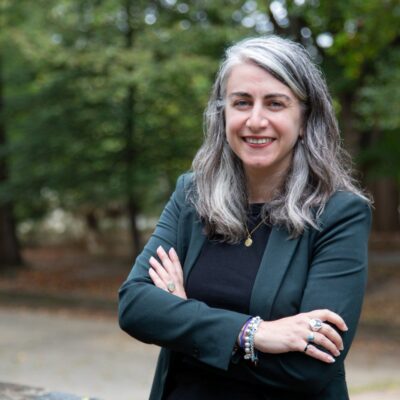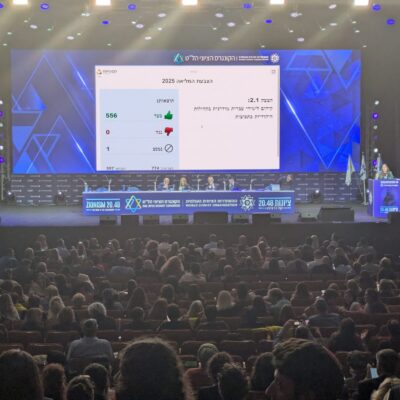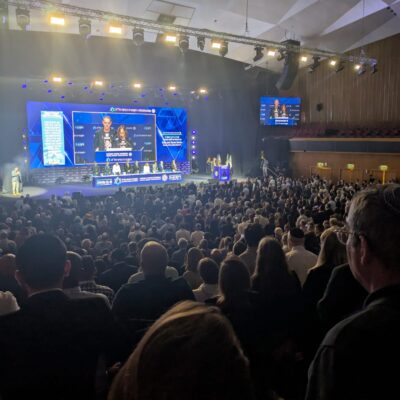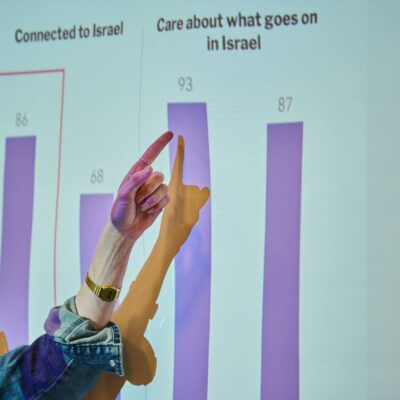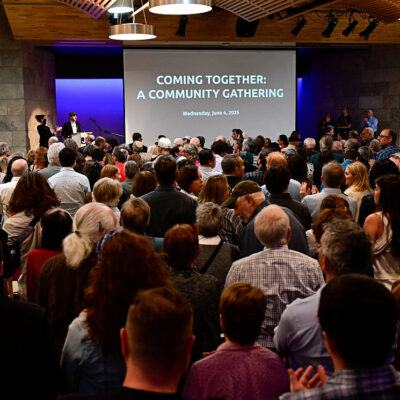A Cheaper Judaism
 by Daniel Libenson
by Daniel Libenson
Wayne Gretzky, by most accounts the greatest hockey player who ever lived, famously explained his greatness by saying, “I skate to where the puck is going to be, not where it has been.”
As delegates gather this weekend for the annual General Assembly of the Jewish Federations of North America, I hope they are asking what it would mean to take Gretzky’s advice seriously with regard to the economics of the Jewish future.
At the G.A., talk of declining fundraising revenue will doubtless flow naturally to the need for budget cuts and re-prioritization. But skating to where the puck is going to be would mean talking about how to develop a less expensive version of Judaism.
We have been here before. When Rabbinic Judaism began to emerge in the first and second centuries, among its many virtues, when compared with Second Temple Judaism, was its affordability.
Second Temple Judaism required the construction, renovation, and maintenance of an ornate Temple and an entire tribe of Jewish professionals called Levites and priests. It was viable only thanks to a steady stream of sacrifical offerings (which provided food for the professionals), and taxes and donations from Jews across the Roman Empire.
Rabbinic Judaism, on the other hand, had no ornate buildings and no professional class. The Rabbis were what we would today call lay leaders. Their income came from other work. They collected no taxes and accepted no sacrifices. The Rabbis created a profoundly different Judaism – a revolution, not an evolution. And part of the new Judaism’s attraction, even while the Temple still stood, was economic. Sacrifices were expensive; prayer was free.
Two thousand years later, Rabbinic Judaism has come to exceed the scale and cost of the Judaism it displaced. Many Jewish buildings are as ornate and expensive to maintain as was the Jerusalem Temple. We have our own legions of Jewish professionals (myself included) whose livelihood depends on donations and dues.
The unsustainable economic structure of North American Jewish life as we have known it is falling apart quickly, a process that will accelerate because younger Jews do not give as much – and certainly not to large and established organizations – as did their parents and grandparents.
Budget cuts are necessary. Of this, there is no doubt. But the current structures of Jewish life face the serious danger of a doom spiral since, in a declining Jewish economy, every program eventually will be cut to the point where it can no longer accomplish its mission.
Our real hope lies in skating to where the puck is going to be: the development of an entirely new approach to Judaism and Jewish living that can once again be sustained without expensive physical structures and that can thrive without Jewish professionals (or at least with a much lower ratio of professionals to citizens).
Because we have lived with the current system for so long, it is difficult for us to imagine a profoundly different one. Like our forbears in the Book of Exodus, we are a “desert generation” that may not find the new way in our lifetimes. Instead, our task is to create the conditions for its discovery – to begin skating in the direction that the puck is going, rather than where it is now.
The experimentation occurring today at the margins of the Jewish community is not marginal. It represents our best hope, and we should promote more of it (even at the cost of deeper budget cuts to other work). Instead of hoping that engaging young adults will lead to synagogue membership and Federation giving, we should be hoping that something entirely new starts to bubble up.
Experimenting with less expensive versions of modern Rabbinic Judaism might also allow for the emergence of new approaches. Imagine a “practice group” of three rabbis (perhaps a partnership of a great educator, prayer leader and pastoral counselor) serving six geographically dispersed congregations, each of which can only afford half of a full- time salary; such an approach would allow small communities to get substantial rabbinic support while also forcing the development of lay-led initiatives and rabbinic-lay partnerships that empower lay people to play rabbi-like roles and develop new forms of Jewish living.
To aid the transition, perhaps Federations should ease out of the centralized fundraising and grant-making business and instead become centralized service providers, allowing small communities to purchase affordable back-office support that would minimize the need for paid staff. Rather than resisting people’s desire to give to smaller organizations they feel close to, Federations could embrace this trend and provide fundraising consulting and support services.
We have reenacted the story of the Exodus time and again in Jewish history. The desert is always hard, and many Jews look backward, even misremembering bad times as “the fleshpots of Egypt.”
Today’s challenges flow from good things, like a sharp decline in anti-Semitism and the full integration of Jews into North American society. It is only natural that a sea change in the Jewish condition should require an entirely new approach to Jewish living.
The pressing question is whether Federations and the other large institutions that are in decline can lead our community to where the puck is going to be, or whether we need to look for leadership somewhere else.
Daniel Libenson is president of the Institute for the Next Jewish Future, a think tank and education center, and director of its jU: Jewish U program at the University of Chicago.
[eJP note: Some of the ideas mentioned above were expressed by Daniel at the ELI Talks in New York City. The video is available here.]

 Add EJP on Google
Add EJP on Google
